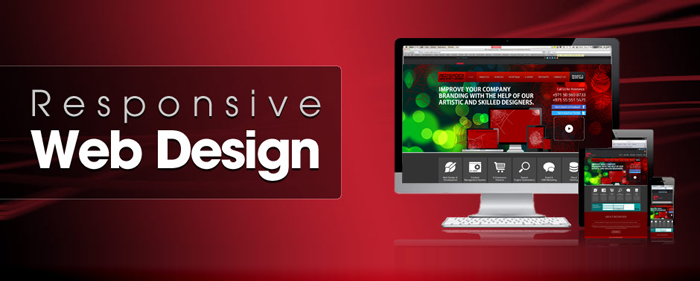Websites today must adapt to different screen sizes. People use smartphones, tablets, laptops, and desktops to browse. A website that looks perfect on a large screen may look broken on a smaller one if it’s not designed properly. That’s where responsive web design plays a major role. Responsive web design helps websites adjust smoothly to any screen. It ensures the layout, images, buttons, and menus all change according to the user’s device. Business owners and developers must understand how it works to offer the best experience to users.
Below are the most important principles, techniques, and Web Design tools that make web design responsive and effective.
Fluid Grid Layout
A fluid grid uses relative measurements like percentages instead of fixed units like pixels. This helps elements on the page resize depending on the screen width. For example, if a column in a three-column layout is set to 33.3%, it will always take one-third of the screen, no matter how wide or narrow the device is. This keeps the design consistent. Without a fluid grid, your layout might break when viewed on smaller or larger devices. It provides the foundation for flexible and adaptive design.
Flexible Images
Images that don’t scale properly can overflow or become blurry. To solve this, designers use CSS rules like max-width: 100% so that images resize within their containers. For example, a product image on an eCommerce website should shrink to fit the screen on a mobile device and expand back on a larger screen. It avoids scrollbars and keeps the layout clean and mobile-friendly.
Media Queries
Media queries are the actual CSS rules that apply styles based on screen width. Designers use breakpoints (like 768px for tablets or 480px for phones) to apply specific layout rules. Media queries control layout shifts for each device category, giving users a smooth experience.
Breakpoints and Layout Adjustments
Breakpoints are the screen width values where the layout changes. For instance, a four-column layout on a desktop might switch to a two-column layout on tablets and a single-column layout on mobile. Proper use of breakpoints ensures no awkward gaps on larger screens and no clutter or overlaps on smaller ones. Professional developers study the target audience’s devices and set breakpoints that reflect real usage patterns.
Mobile-First Approach
Instead of designing for desktop first and scaling down, designers now focus on mobile first. This means starting with the smallest screen and adding features as the screen gets larger. Mobile users often visit websites on the go. It forces designers to focus on important content first. It improves page speed and clarity. This approach ensures that mobile users always have a smooth and usable experience.
Responsive Navigation Menus
Navigation bars can be challenging. On smaller screens, horizontal menus often don’t fit. That’s why designers use toggle buttons or hamburger menus that open vertically. Important options for responsive menus include drop-downs that stack vertically, side-drawer menus, and collapsible accordions. This keeps navigation simple without cluttering the screen.
Performance Optimization
Responsive websites should load quickly on all devices. Large images, uncompressed scripts, or unused styles can slow down mobile users. Ways to improve performance include using compressed images (WebP or SVG), removing unnecessary JavaScript, minifying CSS and HTML files, and using lazy loading for images. These steps make the website faster and user-friendly.
Read Also: Should I Optimize My Website Into a More Responsive One?
Accessibility Features
A responsive website should also be accessible to users with disabilities. This includes font resizing, screen reader compatibility, color contrast for visibility, and focusable elements for keyboard navigation. Everyone should be able to use the website regardless of their physical abilities.
Vectors vs. Bitmaps in Design
Bitmap images (like JPEG or PNG) are made of pixels. When zoomed in, they lose quality. Vector images (like SVG) are based on shapes and formulas. They scale smoothly and work better in responsive layouts. Use vectors for logos and icons. Use compressed bitmaps for photos. This helps maintain quality across screen sizes.
Handling Nested Objects
Web pages often have elements inside other elements (e.g., a button inside a card). These are called nested objects. Designers need to ensure that when the outer container resizes, the inner elements also adjust properly. Use percentage widths for nested blocks. Use flexbox or grid for alignment. Avoid hardcoded values where possible. This ensures visual consistency.
Testing Across Devices
Responsive design must be tested on real devices, not just desktop emulators. You can use Chrome DevTools (Responsive mode), online testing tools like BrowserStack, and real mobile phones and tablets. Each browser renders differently. Hardware differences affect layout. User interaction varies (e.g., touch vs. click). Testing helps fix hidden bugs before users find them.
Tools and Frameworks
Designers don’t always start from scratch. There are popular frameworks that provide built-in responsiveness. Examples include Bootstrap (easy grid system and components), Tailwind CSS (utility-based design with mobile-first classes), Foundation (advanced responsive components), and Material UI (based on Google’s Material Design, good for apps). These tools save time and provide consistency.
Real-Life Example: Real Estate Website
Consider a real estate company with hundreds of property listings. On desktop, you might display a filter bar on the left, three listings per row, and a top navigation menu. On mobile, the layout can shift to a filter button that opens a modal, one listing per row, and a sticky hamburger menu. This example shows how responsive design adapts both content and functionality across screen sizes.
SEO Advantages of Responsive Design
Google prefers mobile-friendly websites. If your site is responsive, it gets better rankings in mobile search, provides a lower bounce rate, and offers faster page load speed. All these factors increase traffic and improve conversions.
Common Mistakes to Avoid
Using fixed widths instead of percentages. Ignoring mobile users. Forgetting to test on different devices. Creating cluttered navigation. Using large images that slow down the site. Avoiding these mistakes improves the user experience.
Final Thoughts
Responsive web design is more than just resizing a page. It’s a complete method of thinking—planning for all users, all devices, and all screen sizes. Whether you’re designing from scratch or updating an old site, applying the right principles ensures your visitors have a smooth experience. If you’re not sure how to begin, work with experienced developers who understand these concepts deeply. A good design not only looks nice—it keeps visitors engaged and helps grow your business.












